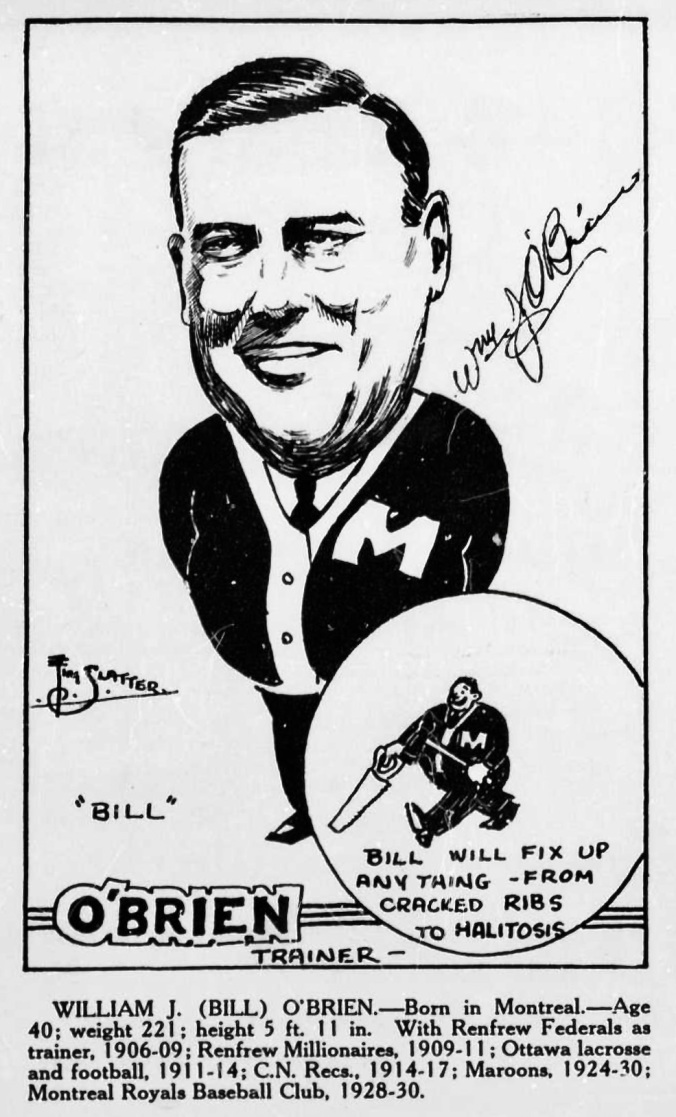
Cup Crew: An array of Montreal Maroons face the camera in November of 1934, five months before they claimed the Stanley Cup. From left, they are: Jimmy Ward, Lionel Conacher, goaltender Alec Connell, Hooley Smith, Allan Shields, and Baldy Northcott. (Image: SDN-077298, Chicago Sun-Times/Chicago Daily News collection, Chicago History Museum)
The Montreal Maroons only needed three games to seize the Stanley Cup 89 years ago, and today’s the day they did it: on Tuesday, April 9, 1935, Montreal’s long-gone, lamented second NHL team upended the Toronto Maple Leafs by a score of 4-1 at the Forum to sweep to victory.
This was the Maroons’ second Cup, reviving a tradition they’d last observed in 1926.
“Whooping Things Up With the Red Panthers” was a headline in the next morning’s Montreal Star, and the Maroons did do some whooping. When the game ended, goaltender Alec Connell (“in a high glee”) heaved his goal-stick into the crowd from sheer happiness — though “even in his exuberance,” the Gazette noted, “he turned around, anxious look on his face, to see if he had hurt anyone.” Mayor Camilien Houde was there, and hugged coach Montreal coach Tommy Gorman, who’d won the Cup the previous year with Chicago, and three more times before that, with Ottawa. He said this was the best team he’d ever handled (and that he’d handled a lot). The Mayor invited the team to City Hall for the following day, where he promised to present them with the keys to the city. Someone delivered a box of flowers to the Montreal dressing room, addressed to defenceman Stew Evans.
Oh, and Maroons’ feisty forward Hooley Smith got himself a horse.
Retired Leaf superstar Ace Bailey was the first Torontonian to come by to congratulate the champions. He was soon followed by Charlie Conacher, in civvies, who made a beeline for his big brother, Maroons defenceman Lionel. King Clancy stopped in, too, to clap Connell on the back. Leaf coach Dick Irvin eventually visited, too, to offer his best. Toronto’s managing director and chief agitator? “Conn Smythe,” the Gazette sniffed, “was not to be seen.” The Star, however, did place him in the crowded Montreal dressing room.
The abject Leafs didn’t linger long: they had a train to catch back to Toronto.
Most of the Maroons had been parted from their sticks, as it turned out, before the festive night was over. Many players gave theirs away on the way from the ice to the room after the game ended. Then also, as the Gazette reported:
After [the players] were in the showers, someone opened the door and threw out half a dozen sticks to the waiting crowd. A wild scramble ensued for possession of the prized trophies and tugs-o-war were the order with three or four fans on each end of a stick.















